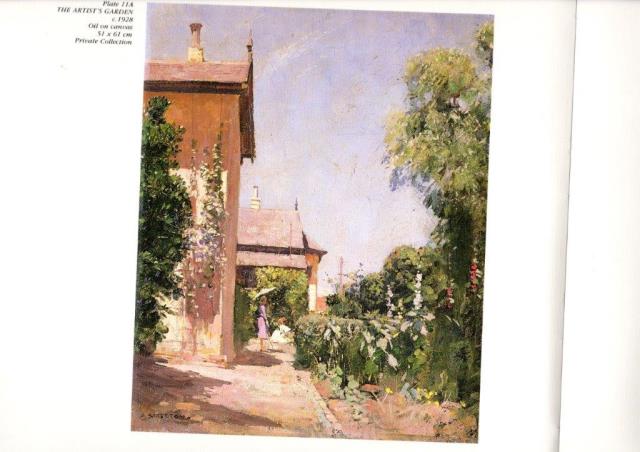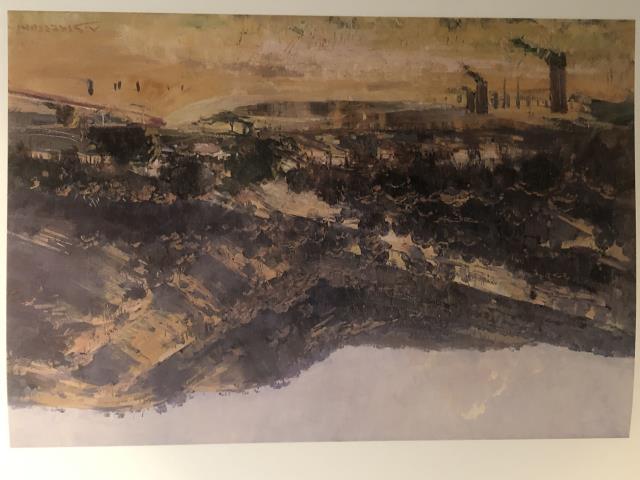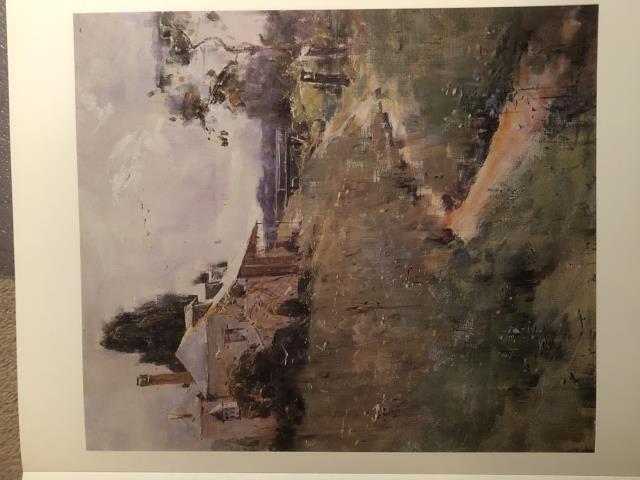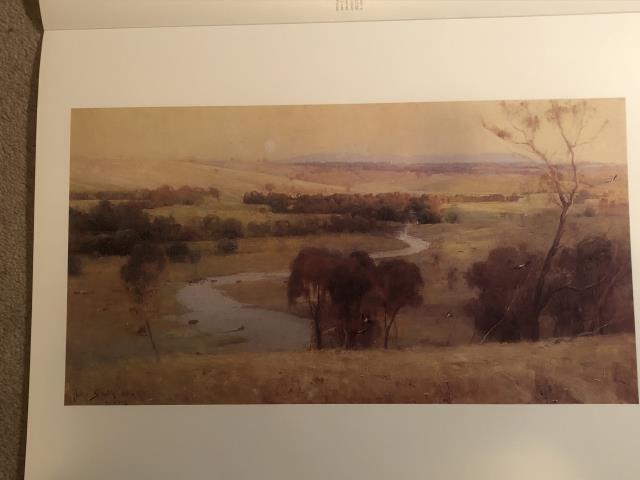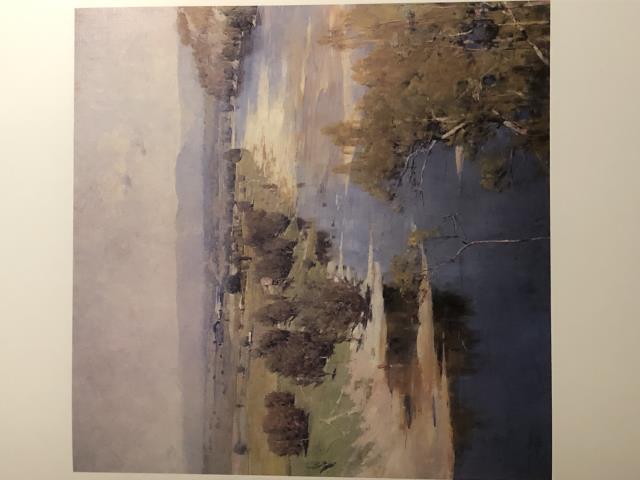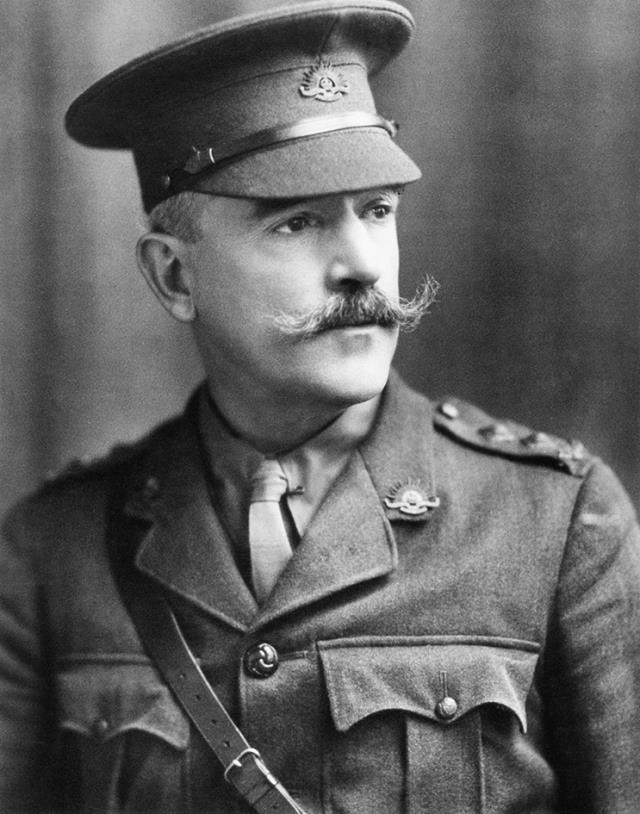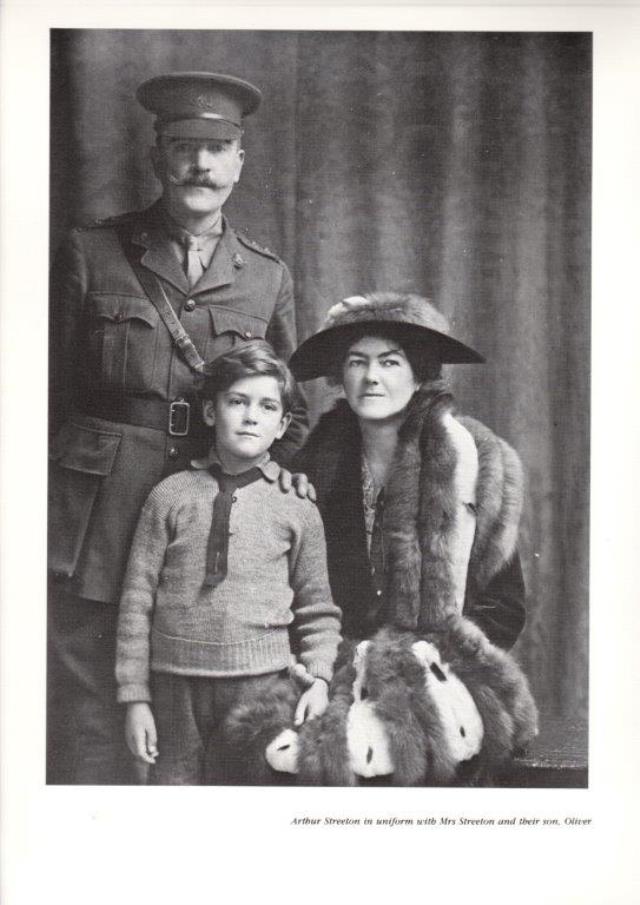
A thoroughfare in Berwick is named after one of Australia’s best known and talented artists, Arthur Streeton, who lived out his years in Olinda, as NEIL LUCAS explains in his latest look and the significance of place and street names in the region.
Streeton Way, Berwick
Widely admired as one of Australia’s greatest artists, Arthur Streeton was born at Mt Duneed, near Geelong on 8 April 1867. Arthur’s father Charles had travelled from England to Australia 13 years earlier with the intention of joining the expedition arranged to travel into the interior to search for explorer Ludwig Leichhardt.
On the voyage Charles met and fell in love with another passenger Mary Johnson whom he married following their arrival in Port Phillip. Although he missed out on joining the expedition, Charles decided to remain in Victoria and took on employment as a teacher and moved to live in Richmond in 1874 when young Arthur was seven years.
(Leichhardt undertook a number of exploratory expeditions – in 1848 he set out on a journey which proposed crossing the continent from the Condamine River, west of Toowoomba in Queensland, to the settlement of Perth on the Swan River. This was a huge undertaking expected to take up to three years to achieve. Nothing more was heard of the expedition and it is thought that members died in their travels westward, most likely in the desert area in the north of Western Australia).
Arthur Streeton appears not to have been a great scholar as he left school at the age of 13 years and took up employment as a clerk with a brandy and spirits importing company, a position he held for five or six years.
It appears that Arthur was already a keen artist, as in 1882 he commenced art classes with G.F. Folingsby at the National Gallery Art School. One of his earliest works was a painting at Sandridge (later renamed Port Melbourne) produced at the age of 17 years in 1884.
Arthur presented an exhibition of his works at the Victorian Academy of Art in 1885. In the following year Arthur took on a position as an illustrator with George Troedel & Co undertaking a lithographic apprenticeship.
In that year Arthur was at Mentone doing some sketching when an interested observer introduced himself. He was artist Tom Roberts who had rented a beach house nearby with his artist mate Frederick McCubbin.
Roberts introduced Arthur to McCubbin and the three began a lifelong friendship.
McCubbin and Roberts invited Arthur to visit their camp in the bush at Box Hill at the weekends where they would paint and generally have a good time developing their skills.
Arthur came to appreciate that the colours of the Australian landscape and the pastoral scenes he enjoyed painting were different from the more traditional outcomes encouraged at his art classes at the Art School in Melbourne. A difference of views on this subject with his tutor Folingsby resulted in Arthur ceasing his tuition there. From this time, Arthur’s works concentrated mainly on landscape and pastoral scenes.
In 1888 Arthur took canvas, paint and brushes on the steam train to Heidelberg and continued on foot into the countryside to paint a rural scene.
On his return towards Heidelberg he met Charles Davies, brother of artist David Davies, who, observing the scene depicted on Arthur’s wet canvas, offered to allow Arthur to take possession of an abandoned homestead at the summit of Mount Eagle (later known as Eaglemont).
And so, Arthur became a tenant at Eaglemont, a house which became a meeting place and residence for many artists. Two artists who spent time living there were Tom Roberts and an English-born Charles Conder who travelled down from Sydney to join them.
To make ends meet Arthur began teaching art. Two pastoral scenes painted by Arthur at Eaglemont are considered by many to be some of his best works – Golden Summer, Eaglemont and Still Glides The Stream, And Shall Ever Glide.
Interestingly one art critic at the time, writing in the magazine Table Talk in May 1889 wrote “Golden Summer, Eaglemont, abundantly testifies to his perfect sense of colour. He paints summer effects as if he loved the country, and had set himself to idealise even the most commonplace scenery. But finish is wanting”. The final comment probably not the most appropriate?
However, the serious recession in Melbourne in the 1890s saw Arthur move to Sydney and with Roberts and other artists establish a camp adjacent to the beach in Little Sirius Cove, Mosman.
They painted beach scenes and travelled around Sydney and out to the west undertaking more rural paintings. Another of Arthur’s well-known works is The Purple Noon And Summer Moon On The Hawkesbury” which it is thought Arthur painted whilst staying at the Richmond Inn adjacent to the Hawkesbury River with Roberts, Conder and a number of other artists in 1896.
The difficult times in Australia in the 1890s were hard to bear and artists found the going difficult. Arthur reluctantly decided to travel to England and see if he could succeed in what was a tougher environment for artists.
Following the sale of a number of his works in Australia, Arthur left for England in 1897, leaving the ship at Port Said, and continuing via Cairo, across to Naples in Italy, and then on to London where he became a member of the Chelsea Arts Club and held an exhibition at the Royal Academy.
Arthur returned to Australia for a short time in 1906 completing works in the Mt Macedon area, prior to sailing again for England early the next year.
Prior to sailing Arthur was interviewed for the Sydney Morning Herald, and commenting on the question “Are our artists making a living in England?” replied “They’d starve if they didn’t“. The next question was “Then what do you advise our students in Australia?’’ Arthur’s response “Nothing. If I advised the best of them to go to London, and they failed – as they might – what would they say to me? But it’s no use anyway- they’ll go. London is the modern Rome, and all art men find themselves there sooner or later. And London is getting bigger so fast. One day London will be all England, with just a motor track round the coast! It is so fatally easy to get swallowed up in it!“
The journalist at Table Talk expressed further opinion on Arthur’s works in April 1907 (after Arthur had sailed for England.) “Mr. Streeton’s show of pictures at the Hibernian Hall is certainly a testimony to his industry and fidelity to his cult in art, but after making the whole round of his dim landscapes, shadowy suggestions of great English scenes, and hazy hints of portraiture, the observer who went to admire sits down to sigh. The whole display is one riot of impressionism in oils and water colours; all is vague, drab and depressing….. we only hope that the genius for half revealing nature, in spite of habitual fogs of the mind, will one day be directed to art in the full blaze of noontide glory, with forest lights and shadows done into breathing pictures such as alone can make people know the artist’s soul”!
During this time in England Arthur married Nora Clench whom he had met during his previous time in that country. Nora was born in Canada and was a world-renowned violinist who had performed in Canada, United States, Europe and in England, including a performance for Queen Victoria (who awarded her a diamond and ruby brooch).
Arthur and Nora married in 1908, at which time Nora retired from performing. Three years later their only child Charles was born.
Arthur was back in Melbourne in 1914 holding exhibitions in Sydney and Melbourne. The exhibition in Melbourne was conducted at the Atheneum Gallery and was opened by none other than the great Australian soprano Dame Nellie Melba.
A number of the paintings (some in water colour) were painted at Coldstream and of Coombe Cottage, Melba’s home.
Arthur returned to London in early 1915, and although 48 years of age, with Tom Roberts who was also in London, joined the Royal Army Medical Corps and served at a London Hospital.
Streeton was then invited by the Australian Government to take up the role of War Artist, which he accepted, and was commissioned as an Honorary-Lieutenant. In this capacity he travelled to the trenches of the Western Front producing visual records of the terrible conflict.
Commenting on Arthur’s continued living in England the Melbourne Herald in November 1919 commented “The trouble always, however, was that buyers were not plentiful enough. Our plain duty as Australians should be to encourage our own, but in the past the tendency has ever been to drive our geniuses out. “Starve“ would perhaps he the better word. In this “new world” in which we have been reading so much while the war was on, some scheme may be evolved whereby Australians will not be forced out of their own country to secure a market for their wares, or for the art productions which should be the heritage and inspiration of Australians for all time.”
A few months later The Age also commented – “But nothing can shake Streeton’s position in Australian art. He established an ideal of beauty hitherto unthought of in his country. At his best he is an impressionist in the truest sense of the word: a realist, with an intense receptiveness for the beauty of his surroundings, and on this account Australia will ever owe him a debt of gratitude.”
Maybe these messages were received in England for in the following year Arthur, Nora and their son Charles returned to Australia and purchased five acres (two hectares) of land at Olinda in the Dandenongs on which they built a house designed by Arthur in 1924. They named the property Longacres.
When the government decided that a war memorial would be appropriate for Melbourne, in 1922 a competition was arranged which attracted 83 designs.
Arthur prepared a drawing of his suggestion which comprised a 200 feet high stone shaft which could be seen from around Melbourne. He was not successful but the winning entry, a Shrine of Remembrance designed by two returned-soldier architects was constructed over a seven-year construction period and opened in 1934 by the Duke of Gloucester, son of King George V.
In 1927 the Streetons moved back into Melbourne acquiring a house in Grange Road, Toorak whilst retaining their property at Olinda.
Arthur continued painting and in 1928 won the prestigious Wynne Prize of the Art Gallery of NSW with his work Afternoon Light, Goulburn Valley. He also was engaged by The Argus newspaper in Melbourne as the paper’s art critic.
Arthur arranged exhibitions of his works both in Australia and abroad – in 1923 he had an exhibition in New York. His financial situation improved markedly with the popularity of his work and he became recognised as a significant Australian artist.
Prior to an exhibition in Brisbane in 1931 the local Brisbane Courier commented “No one before him had translated to canvas the peculiar blue tint of our skies, and none excelled in suggesting the effect of distance. Through Streeton Australians discovered their country, suddenly, as if by revelation. There is no retiring age among artists. Streeton is now 64, and is as active and vigorous as a man of 50. He is writing as well as painting, being the art critic on the Melbourne Argus.“
In 1937 Arthur was knighted for services to the arts. Norah, Lady Streeton, died in the following year, after which Arthur took up permanent residence at Longacres at Olinda.
Sir Arthur Streeton died in September 1943 and was buried at the Ferntree Gully Cemetery.



